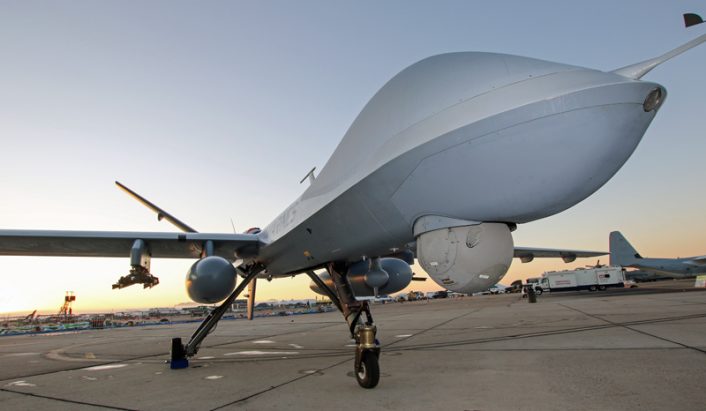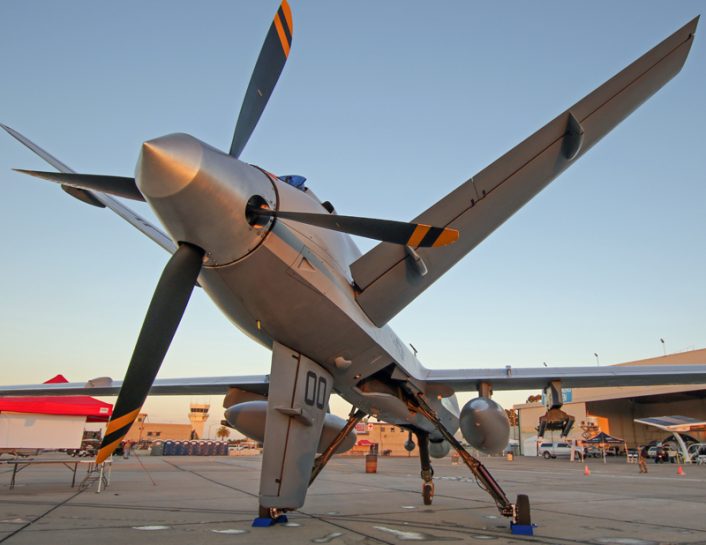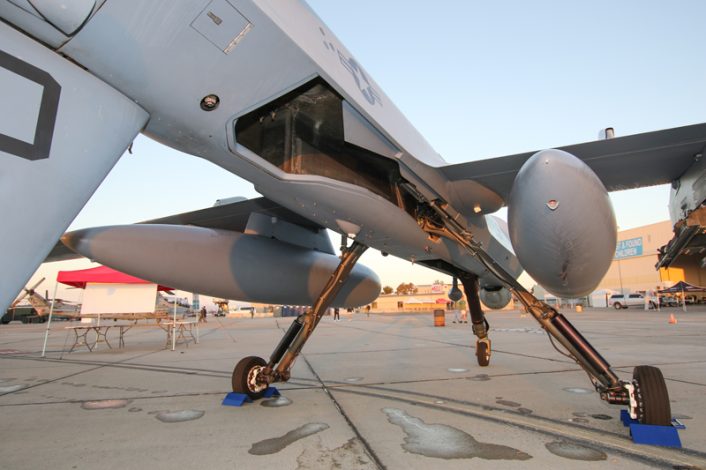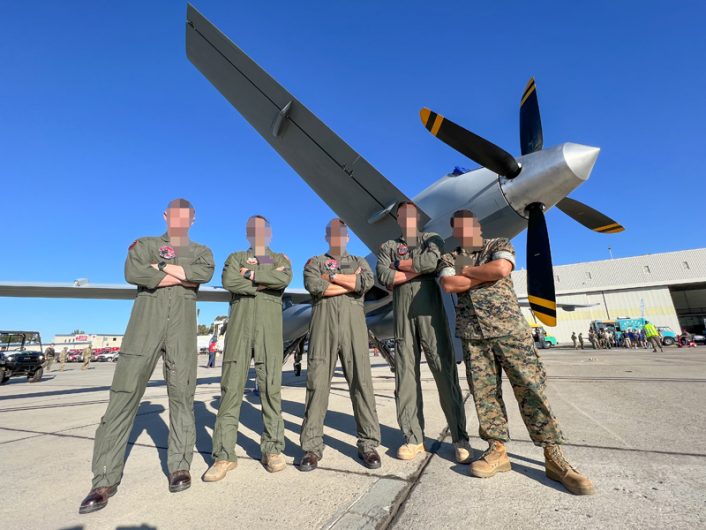New Marine Corps RPAs Will Provide Long Duration Surveillance and Close Air Support.
The giant U.S. Marine M1A1 Abrams tanks were gone from the static displays and action demos at the MCAS Miramar Airshow in 2022. The Marines retired their heavy tank capability during the pandemic in 2021. But an interesting, if less imposing, static display quietly showed up at the back of this year’s displays at MCAS Miramar. And this new exhibit is a significant example of the Marines’ ability to adapt to an increasingly asymmetrical battlespace while maintaining big adversary, peer-to-peer combat capabilities.
For the first time at MCAS Miramar, Marine Unmanned Aerial Vehicle Squadron 1, VMU-1, the “Watchdogs” of Yuma, Arizona, displayed a new MQ-9A ER (Extended Range) remotely piloted aircraft (RPA). The unique variant of the highly successful MQ-9 upgrades the legacy Reaper with extended loitering capability. The MQ-9A ER can remain on station over a target area for up to “34 hours”.

One member of the Marine unit implementing the new MQ-9A ER Reaper capability told TheAviationist.com: “The biggest thing is to be able to have a higher on station time than really any other aircraft in the fleet. Being able to support guys on the ground and being able to stay outside of any perceived threat, potentially 24 hours a day, if we need to.” The member of the unit went on to tell TheAviationist.com that the new capability provided by long endurance MR-9A ERs is, “Supporting the reorganization of the littoral combat teams”.

In simple terms, the new U.S. Marine MQ-9A ER gives Marines on the ground and in the near-shore, coastal combat theater a loitering surveillance and precision strike capability down to the small unit level. A new USMC MQ-9A ER can remain in the air over a landing force or detachment of Marine infantry for well over 24 hours without interruption. Additionally, imagery from the MQ-9A ER can be shared in near real-time with in-theater leadership all the way up to the highest level of leadership around the globe.

U.S. Marines have had a long-standing indigenous remotely piloted aircraft capability that included the small unit sized Switchblade drone, the larger Raven and Puma RPAs and the previously largest RPA, the RQ-21 Blackjack catapult launched, remotely piloted aircraft. The upgrade to the long endurance MQ-9A ER provides not only enhanced surveillance capability to Marines on the ground, but also brings the combat proven armed capability of the MQ-9 Reaper family to the Marines.
The MQ-9A ER is differentiated from other Reaper versions predominantly by the four-bladed propeller and the two 1200-lb capacity external fuel tanks. These fuel tanks provide up to 25.9% greater endurance depending on winds, temperatures and altitudes. Stated endurance can go from 27-hours to 34-hours. The aircraft also has reinforced landing gear to support the heavier fuel load.

According to a July 18, 2022 report by Ryan Finnerty on FlightGlobal.com, “GA-ASI [General Atomics- Aeronautical Systems Inc.] will begin delivering aircraft and support equipment this winter to facilitate the fleet stand-up in late summer 2023. The UAVs will go to Marine Corps Air Station Kaneohe Bay in Hawaii, where they will support the 3rd Marine Littoral Regiment (MLR) based in the same area.”
While the interesting, if low-key static display of the MQ-9A ER at the MCAS Miramar Airshow may not have attracted as much public attention as the famous legacy F/A-18 Hornets and new F-35B and C models, Marine flight crews and support personnel from VMU-1, the “Watchdogs”, were enthusiastic about their new mission and capabilities while displaying the MQ-9A ER Reaper at MCAS Miramar. One member of the unit told TheAviationist.com that the MQ-9A ER represents, “The inevitable future” of Marine air capability.










